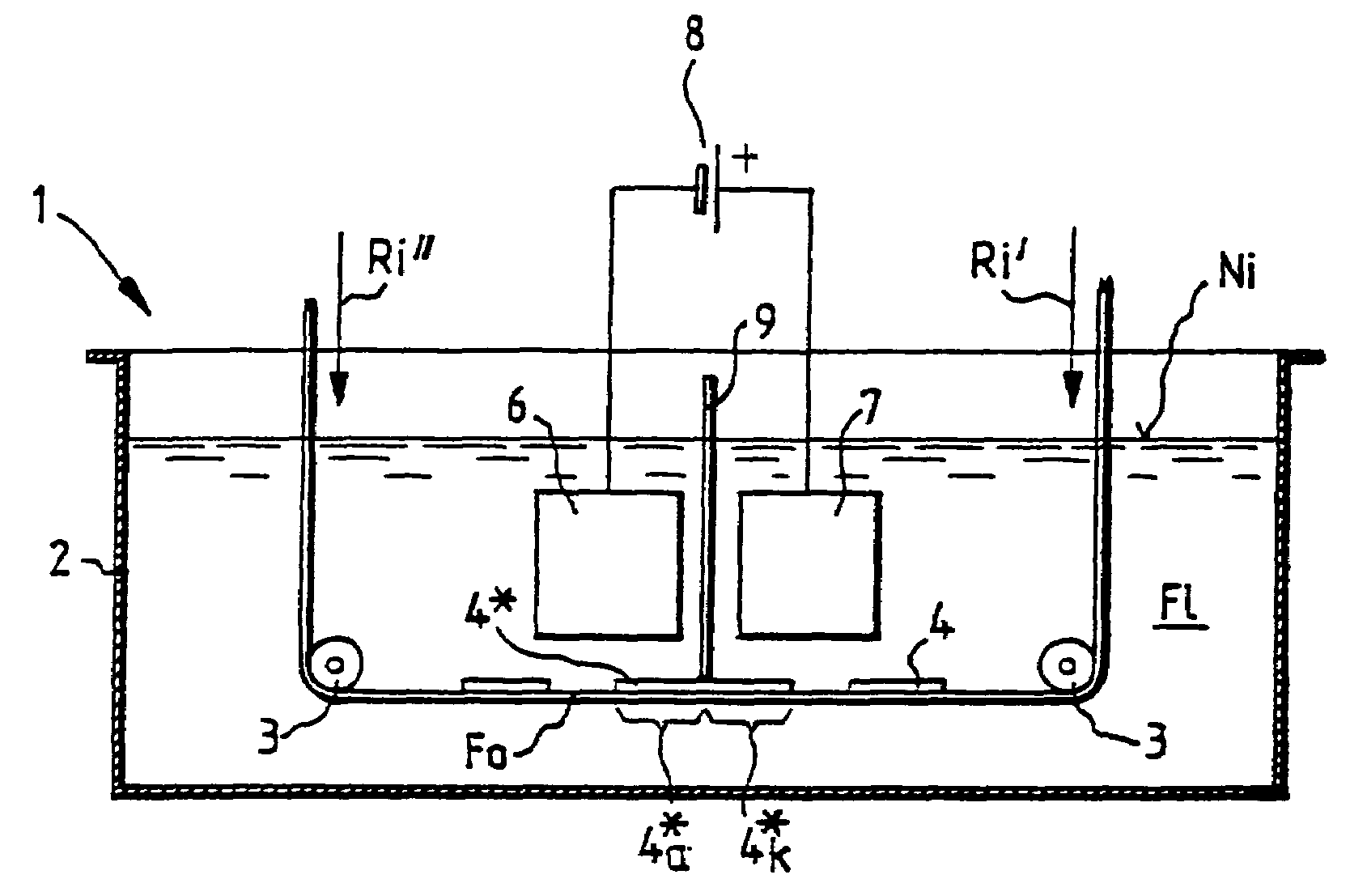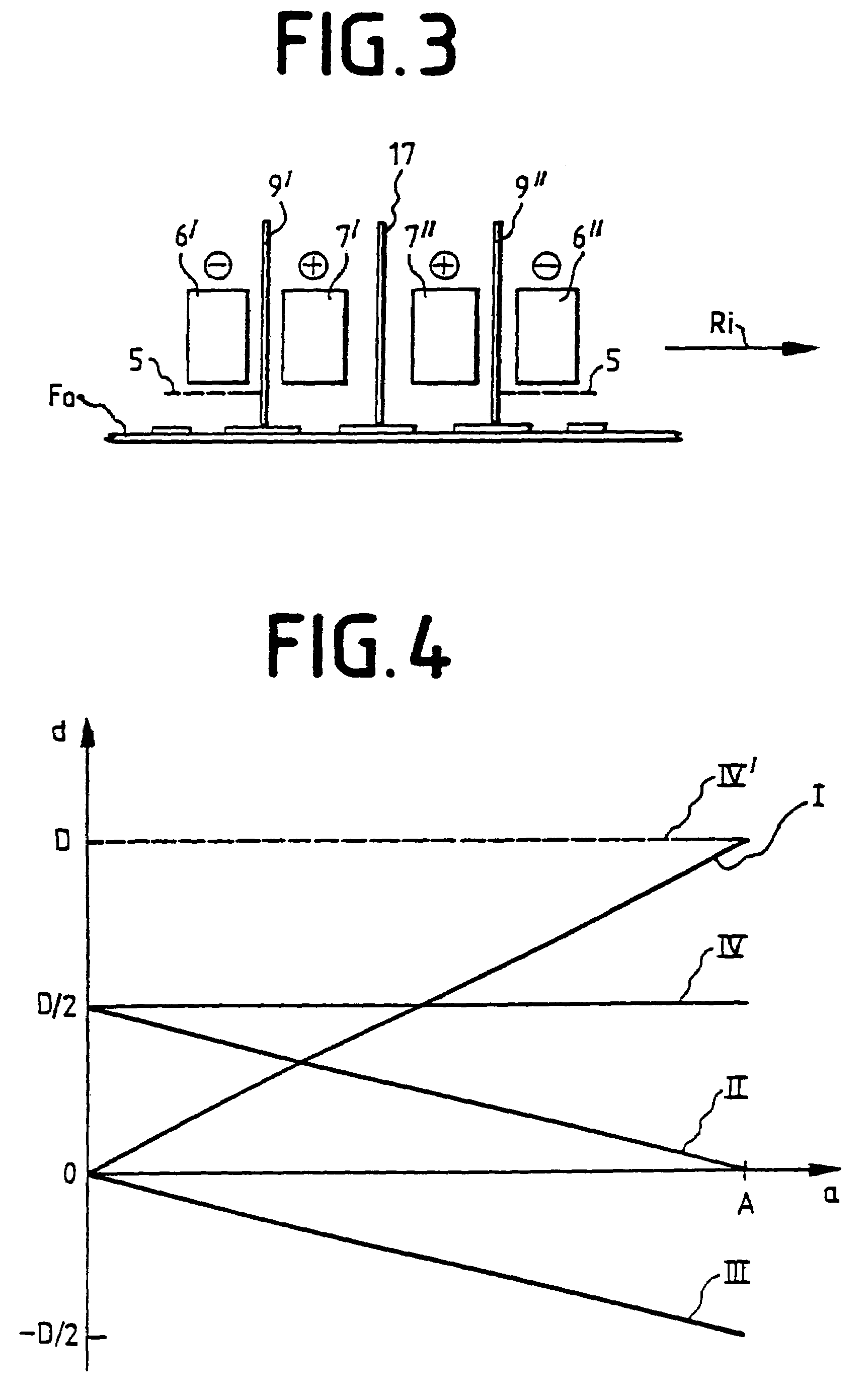Method and device for the electrolytic treatment of electrically conducting structures which are insulated from each other and positioned on the surface of electrically insulating film materials and use of the method
- Summary
- Abstract
- Description
- Claims
- Application Information
AI Technical Summary
Benefits of technology
Problems solved by technology
Method used
Image
Examples
Embodiment Construction
[0017]In order to implement the method according to the invention, the foil material is unloaded from a store, for example a roller (for example unwound), then transported on a conveying line through a treatment unit and brought thereby in contact with treatment fluid. After passing through the unit, the foil material is finally loaded (for example wound) once again onto a store, for example a roller. One possibility consists in transporting the material in a horizontal conveying direction. The conveying line shown in the drawings as flat and horizontal could, if desired, be vertical. Such an arrangement is implemented in so-called reel-to-reel units. For this purpose, the material is transported by known means, for example by rollers or cylinders. Alternatively, the foil material can also be guided in the unit via deflecting rollers and as a result can change the direction in the unit one or more times. As a result, the longest possible route in the unit is attained so that the tre...
PUM
| Property | Measurement | Unit |
|---|---|---|
| Time | aaaaa | aaaaa |
| Angle | aaaaa | aaaaa |
| Electrical conductivity | aaaaa | aaaaa |
Abstract
Description
Claims
Application Information
 Login to View More
Login to View More - Generate Ideas
- Intellectual Property
- Life Sciences
- Materials
- Tech Scout
- Unparalleled Data Quality
- Higher Quality Content
- 60% Fewer Hallucinations
Browse by: Latest US Patents, China's latest patents, Technical Efficacy Thesaurus, Application Domain, Technology Topic, Popular Technical Reports.
© 2025 PatSnap. All rights reserved.Legal|Privacy policy|Modern Slavery Act Transparency Statement|Sitemap|About US| Contact US: help@patsnap.com



